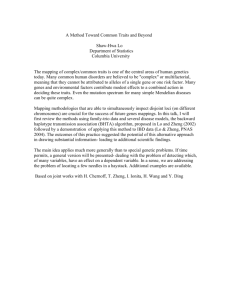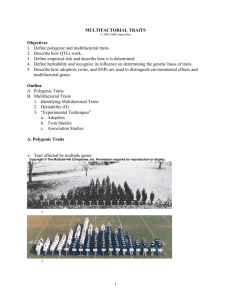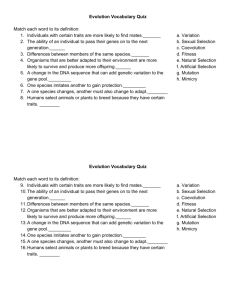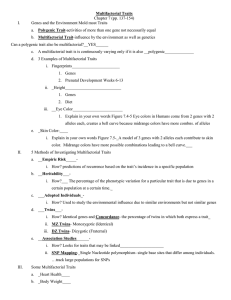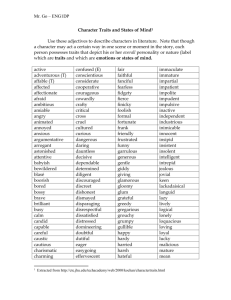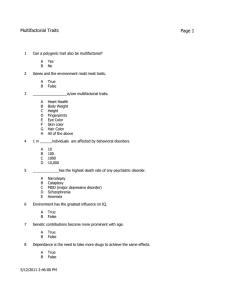Chapter 5
advertisement
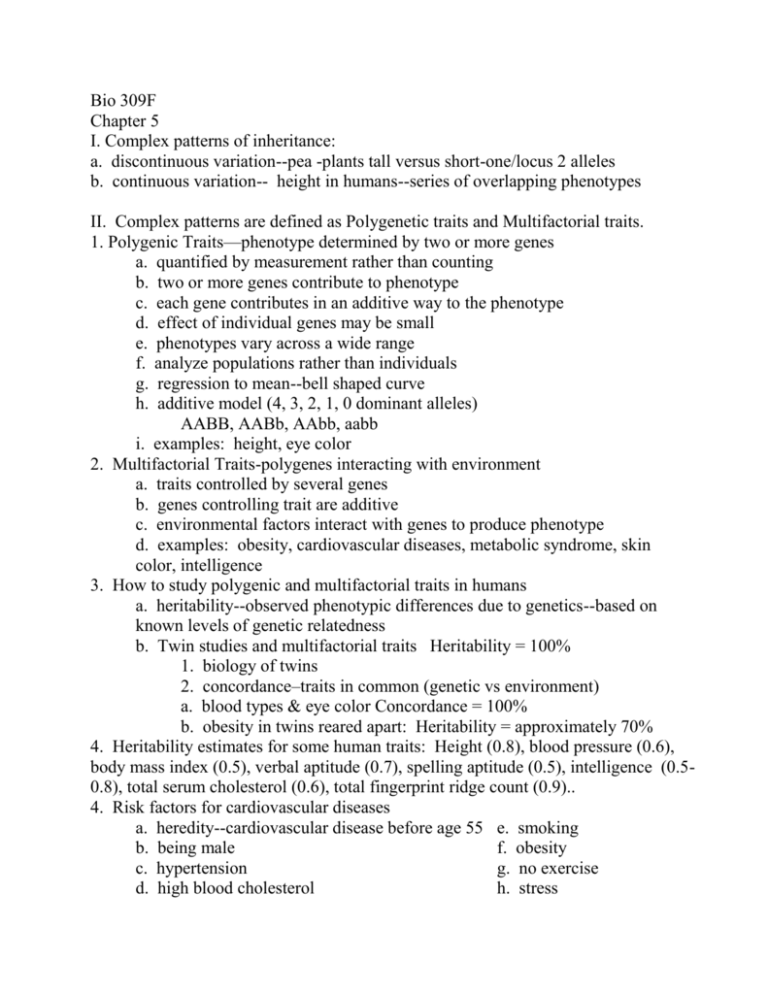
Bio 309F Chapter 5 I. Complex patterns of inheritance: a. discontinuous variation--pea -plants tall versus short-one/locus 2 alleles b. continuous variation-- height in humans--series of overlapping phenotypes II. Complex patterns are defined as Polygenetic traits and Multifactorial traits. 1. Polygenic Traits—phenotype determined by two or more genes a. quantified by measurement rather than counting b. two or more genes contribute to phenotype c. each gene contributes in an additive way to the phenotype d. effect of individual genes may be small e. phenotypes vary across a wide range f. analyze populations rather than individuals g. regression to mean--bell shaped curve h. additive model (4, 3, 2, 1, 0 dominant alleles) AABB, AABb, AAbb, aabb i. examples: height, eye color 2. Multifactorial Traits-polygenes interacting with environment a. traits controlled by several genes b. genes controlling trait are additive c. environmental factors interact with genes to produce phenotype d. examples: obesity, cardiovascular diseases, metabolic syndrome, skin color, intelligence 3. How to study polygenic and multifactorial traits in humans a. heritability--observed phenotypic differences due to genetics--based on known levels of genetic relatedness b. Twin studies and multifactorial traits Heritability = 100% 1. biology of twins 2. concordance–traits in common (genetic vs environment) a. blood types & eye color Concordance = 100% b. obesity in twins reared apart: Heritability = approximately 70% 4. Heritability estimates for some human traits: Height (0.8), blood pressure (0.6), body mass index (0.5), verbal aptitude (0.7), spelling aptitude (0.5), intelligence (0.50.8), total serum cholesterol (0.6), total fingerprint ridge count (0.9).. 4. Risk factors for cardiovascular diseases a. heredity--cardiovascular disease before age 55 e. smoking b. being male f. obesity c. hypertension g. no exercise d. high blood cholesterol h. stress


